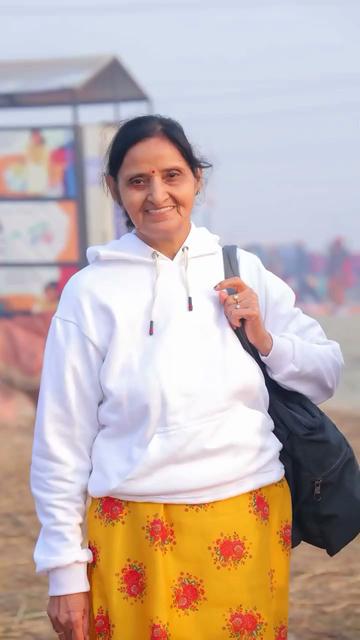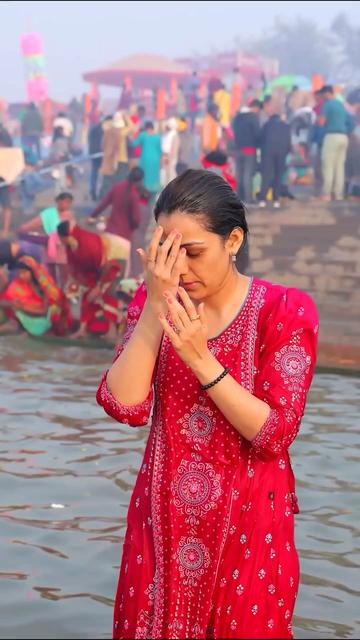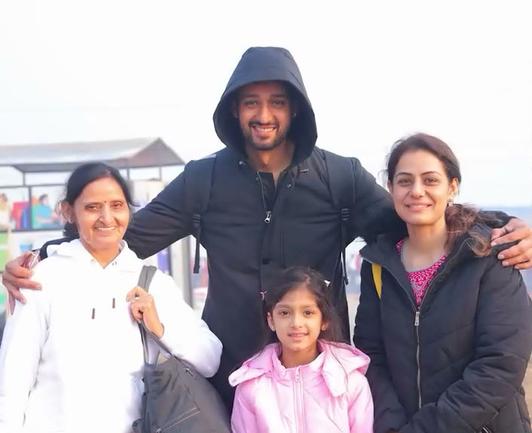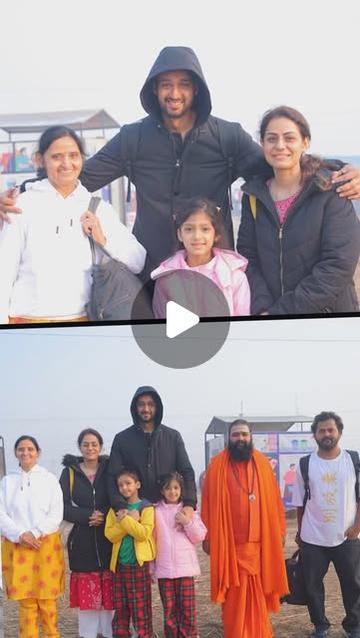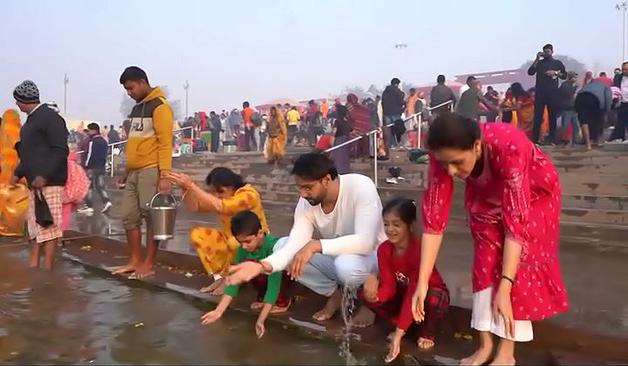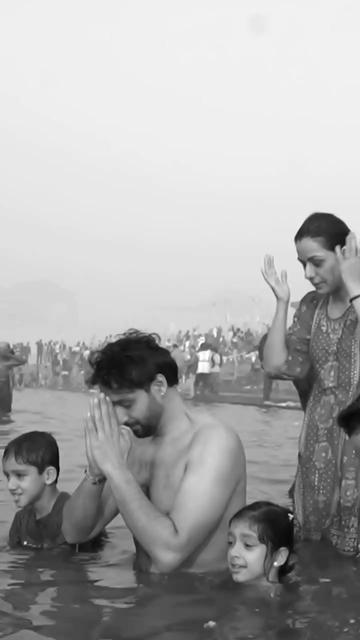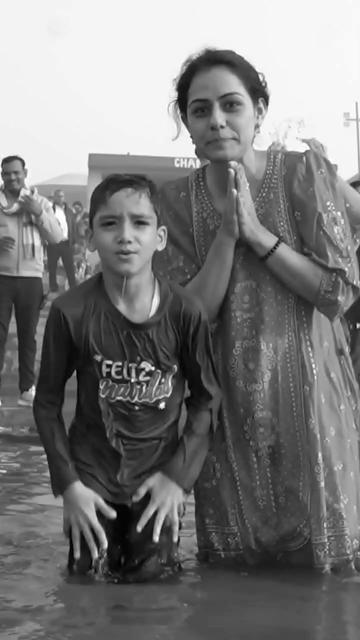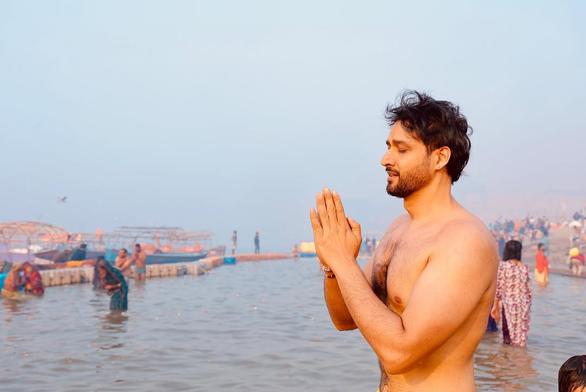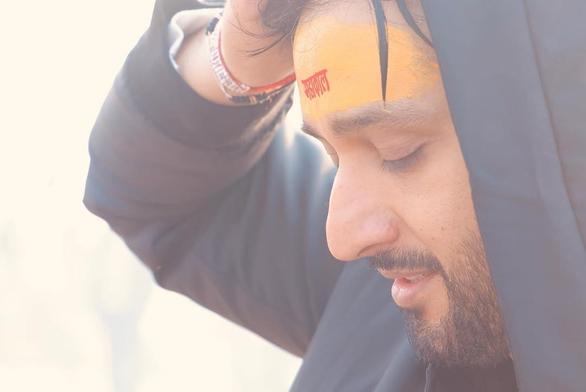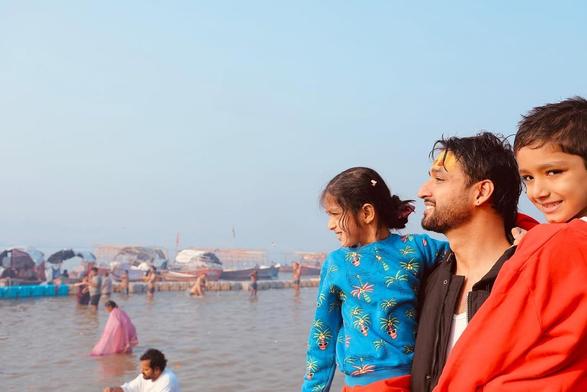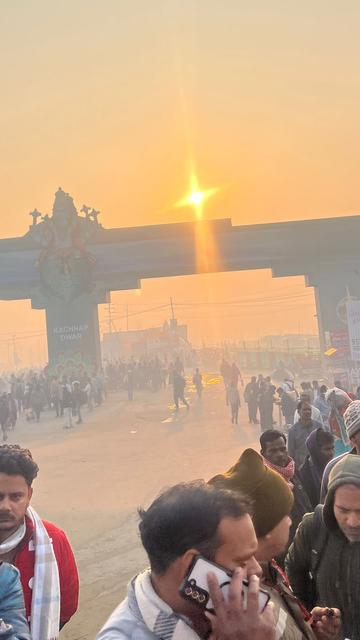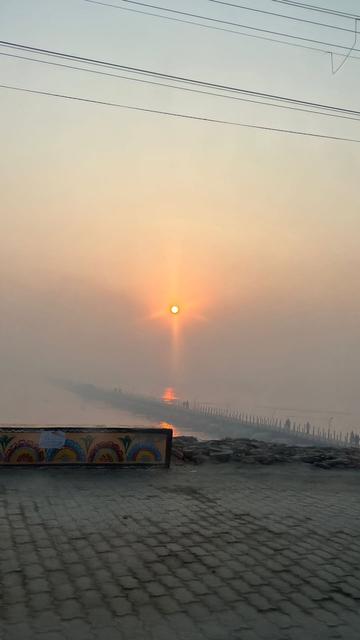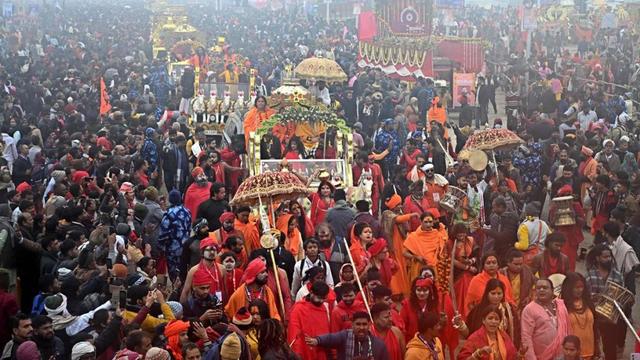Kumbh Mela: Gods, gurus, and glass turtles
On a cloudy day in January, millions of saffron-clad people stand on the banks of the Triveni Sangam, the confluence of the rivers Ganga and Yamuna and the mythical river Saraswati in Prayagraj, Uttar Pradesh. They wait patiently to immerse themselves in the icy waters. The pilgrims believe that taking a dip at the Sangam during the 45-day-long Maha Kumbh Mela (great festival of the sacred pitcher) will cleanse their souls of all negativity and help them attain moksha (freedom from the eternal cycle of life, death, and rebirth).
The swarm of saints, sadhus, ash-smeared Nagas (a sect of Hindu ascetics), pilgrims, and tourists is so large that not even an inch of the ground is visible at the river bank. People enter and move out of the ghats from all directions, but in an orderly fashion. Pilgrims take turns to bathe. Many of them also help strangers, some of who look dazed in this sea of humans.
In pictures | Maha Kumbh Mela draws sea of devotees at Triveni Sangam
At one of the ghats, Prince Pandey, 19, has spread a bedsheet on the floor so that his 80-year-old grandmother, Leelawati, can rest for a while. Leelawati has travelled 150 kilometres from Chandauli district to Prayagraj on Pandey’s bike to take a dip in the river. She says she has done this against the advice of her doctor.
But Leelawati was determined to make the journey. “My father would often tell me that bathing at the Sangam during the Kumbh Mela would purify the soul,” she says.
Devotees gather to take dip at the Sangam in Prayagraj.
| Photo Credit:
PTI
Leelawati explains one of the origin stories of the Kumbh Mela told in Hindu mythology. “During the Samudra Manthan (churning of the ocean), the devas (gods) and asuras (demons) were seeking amrit (the elixir of immortality). As they churned the ocean for amrit, a battle broke out between them. Worried that the asuras would trick them, the devas entrusted Lord Vishnu with the kumbh (urn) containing the amrit. As Lord Vishnu travelled with it, drops of amrit spilled from his kumbh at Prayagraj, Haridwar, Ujjain, and Nasik,” she says.
While the Kumbh Mela is held every three years by rotation in these four cities, the Maha Kumbh Mela is held once in 12 years. The belief is that Lord Vishnu’s journey with the amrit lasted 12 days, which is equivalent to 12 years.
This year, until January 23, up to 10 crore people had visited the Maha Kumbh Mela, which began on January 13. The Uttar Pradesh government estimates that by February 26, the last day of the festival, 45 crore people would have visited the Mela, making this among the largest religious events of the world.
In the land of babas and astrologers
Hundreds of loudspeakers are placed atop poles in the temporarily erected tent city, which is spread over 40,000 hectares, on the banks of the Sangam. Chants blare from some and hymns from others. Near the ghats, loudspeakers are mostly used to call out the names of missing people. This happens every 2-3 minutes. “Aye Rajesh, hum kho gaye hain. Aa ke le jao (We are lost, come and take us from here),” screams a voice on a loudspeaker.
According to the Uttar Pradesh government, there are 41 bathing ghats connected by 30 pontoon bridges. Religious organisations have erected 1.6 lakh tents. There are police stations, hospitals, lost-and-found centres, banks, and other institutions numbering 10,000 in this micro city. Thousands of security cameras and drones have been set up.
Baidhyanath Mishra, 75, hired a cab to travel 500 km from Bihar’s Darbhanga to Prayagraj for the Kumbh Mela. Mishra had travelled across the south with his wife, Neelam Devi, but had never explored north India.
“I wanted to travel across the north and also take a dip in the Sangam with her. But she died before we could fulfil that dream,” he says. Mishra, a mathematics teacher, lowers himself into the river while holding a picture of his wife. He believes that she is watching him from heaven.
After taking a dip at the ghat, Prince buys khichadi (rice, dal, and vegetables cooked together) for breakfast from a couple distributing langar (free food) to the pilgrims near a parking area. He and his grandmother then get ready to visit the ashrams of 13 akharas, the ancient sects of warrior saints.
“You will find unique ascetics who come here to attend the Mela before vanishing into the deep forests or the Himalayas. The Kumbh pilgrimage is not complete until you bathe, provide charity, and take the blessings of ascetics,” says Leelawati. She is especially eager to meet Digambar Diwakar Bharti, a baba (saint) who has reportedly kept one hand lifted in the air for about 10 years.
Some ashrams are gigantic; they belong to sadhus who are millionaires. There are also tiny huts that belong to Nagas, a sect of ascetics who believe in renouncing all material possessions, including clothes. Inside the ashrams, these men, many caked in ash, sit around fires.
A Naga sadhu at his tent.
| Photo Credit:
ANI
The babas are of all kinds. ‘Rudraksha baba’ wears a crown weighing 40 kilogrammes. It is made of rudraksha beads (dried seeds from the Elaeocarpus ganitrus tree), which symbolise the tears of Lord Shiva. Another baba wears leopard prints and aviator shades during the day and night. Yet another wears gold jewellery weighing 5-6 kg and costing ₹2.5 crore-3 crore. Abhay Singh, popularly known as ‘IIT baba’ as he had studied at the premier educational institution, is this year’s sensation at the Kumbh Mela. Most babas lecture pilgrims on Sanatana Dharma, Hindu traditions, values, and the importance of charity.
There are also astrologers and palm readers everywhere. People who are desperate to find a partner, or get a job, or build a house, or have children, flock to them.
Valentino Casino, a 30-year-old Italian, wants to know how many children he will have. “I have great interest in astrology. The Kumbh Mela is where you will meet some of the best astrologers,” he says.
Casino says he has visited 25 countries so far. “India is probably the only country that I have visited thrice because it’s so unique,” he says.
Casino also goes to the ashram of Shri Pitambara Shakti Peetham, a non-profit organisation that runs a free gurukul (school). The school teaches computer science, math, English, the Vedas, Upanishads, Shastras, Jyotish (Vedic astrology), and Vastu (an ancient Indian system of architecture). He learned how the schedule of the Kumbh is based on planetary alignments, mainly of the sun, moon, and Jupiter, from the founder of the gurukul, Manoj Chaturvedi.
“I don’t see any difference between an Indian and a foreigner when it comes to the questions of life,” says Chaturvedi. “Everyone is curious about their future. Cultures and ways of worship may be different, but our emotions are universal.”
Foreigners take a dip in the waters at the Triveni Sangam.
| Photo Credit:
Sandeep Saxena
After the Kumbh Mela, Casino and his friend Catreena are planning to learn yoga at Rishikesh and then visit Varanasi and Ayodhya.
Antony Smith from London cut short his Delhi-Agra-Varanasi trip to visit the Kumbh Mela. A technician with a passion for photography, Smith believes that the Kumbh is a heaven for photographers. “This place is fascinating,” he says. “The joy and display of faith are amazing. People are really friendly. I am overwhelmed by the sounds and smells.” To fit into the crowd, Smith has bought himself a yellow kurta-pyjama set.
Emma from Spain is impressed by the administration. “This is immensely crowded but so well-managed,” she says.
The government also plans to take foreign diplomats to the Kumbh Mela.
On the margins
Kumbh is divided into 25 sectors. One of them is Arail. The townships of Teliyargunj and Jhunsi lie parallel to Arail. Pilgrims from poor economic backgrounds and Kalpwasis stay here. Kalpwasis are devotees who live a minimalistic life. They stay at the Kumbh Mela for weeks, eating only once a day, bathing before sunrise, and spending their time in prayer and meditation.
Tents for Kalpwasis at the Maha Kumbh Mela. Kalpwasis are devotees who live a minimalistic life. They stay at the Kumbh Mela for weeks, eating only once a day, bathing before sunrise every day, and spending their time in prayer and meditation.
| Photo Credit:
Sandeep Saxena
Sanjay Kumar, 46, from Bhadohi, says the Kumbh has become expensive for Kalpwasis. “My parents have been visiting Prayagraj to observe Kalpwas for the last 20 years. No one cares about poor pilgrims. This government is only focused on making the Kumbh Mela a tourism venture,” he says.
This year, the government has placed a cap on the prices of ferry rides. Jeetandra, a boatman at the Sangam ghat, cannot understand the logic behind this. “The government places caps on the earnings of poor boatmen, but there are no caps on the prices charged by some of the tent owners, who are millionaires. Hotel owners have tripled the prices of rooms. Nor is there a limit on the amount charged by airlines,” says Jeetandra, who admits he charges pilgrims ₹200 per head against the ₹75 fixed by the government. Policemen with bamboo sticks tell him not to be harsh on devotees.
In the boat, Lary Chan, a man of Chinese origin who lives in San Francisco in the U.S., asks Jeetendra what the significance of the Kumbh is to him. “India follows the caste system, Sir,” says Jeetendra, who belongs to the ‘lower caste’ Nishad community. “Everyone loves these hierarchies. But at the Kumbh, you won’t find any Dalit, Thakur, or Brahmin; everyone is a devotee here.”
The Bharatiya Janata Party (BJP)-led State and Central governments are also advertising the Kumbh Mela as a fair of samajik samrasta (social unity). Everywhere, there are giant posters of Prime Minister Narendra Modi washing the feet of sanitation workers who primarily belong to the Dalit community. The photos were taken during the previous Kumbh Mela in 2019. There are also billboards promoting the Modi government’s social welfare programmes in the solar, health, education, and other sectors.
With Ayodhya’s Milkipur Assembly constituency going to the bypolls, the BJP’s Uttar Pradesh unit is also busy distributing copies of the Constitution to sanitation workers. Dalits make up around 50% of the seat’s total electorate. The aim is possibly to counter the narrative built in the Lok Sabha polls in 2024 that the BJP would change the Constitution if voted back to power with 400 seats. The ruling party feels that this narrative held sway and the BJP lost Faizabad constituency, of which Ayodhya is a part.
Pyare Lal was among the sanitation workers whose feet the Prime Minister washed in 2019. However, Lal says nothing has changed for him since. “I still clean toilets for the same wage and I’m given the least respect in society,” he says.
Laxmi Narayan Tripathi, a transgender rights activist, who is the Acharya Mahamandaleshwar of the Kinnar akhada, feels that the government and society are making an effort to eradicate discrimination. “But it is true that discrimination still prevails. It can be seen not only along caste lines, but also along the lines of gender. It can be seen not only among worldly people, but also among sadhus and saints,” says Tripathi.
The Uttar Pradesh government’s digital gallery that showcases the journey of the Maha Kumbh Mela through virtual reality installations and other digital technologies does not mention the akhara for transgender people even though this is among the most crowded akharas at the Mela. People line up to click photos with sadhus of the transgender community who, unlike other sadhus, wear silk sarees, heavy jewellery, and makeup. They bless pilgrims in exchange for rice grains and cash.
Also read: Kumbh Mela | At Prayagraj, an encounter with naga sadhus and tent stays
The Kumbh Mela economy
The Kumbh Mela is also a major economic driver for the State, especially for the people of Prayagraj. The government has invested about ₹7,500 crore in the Kumbh Mela this year. Chief Minister Yogi Adityanath told the media that the government is expecting the Maha Kumbh to contribute up to ₹2 lakh crore to India’s economy and increase the GDP of the State by more than 1%.
Chief Minister Yogi Adityanath takes a dip in at the Sangam.
| Photo Credit:
AFP
The fair offers all kinds of business opportunities. There are hundreds of stalls selling pizza, coffee, snacks, and agricultural products; offering bike and mobile repair services; and advertising brands, banks, and e-commerce companies.
Rajesh Gupta, who lives near Triveni Sangam, has an undergarments stall. “It is common to see undergarments falling on the ground and getting dirty at the ghats. I end up selling at least 50 each day,” he says.
Pankaj Kumar, 18, from Naini area of Prayagraj, sells tea. He says he will use the cash to buy books to study medicine. “My mother gave me a thermos flask and a gas cylinder, my friend gave me a folding table, and my father bought ingredients so I could start the business,” he says.
Vinod Kumar, 50, from the Mumfordgunj locality, decided that he would sell datun (twigs of the neem tree used to clean teeth). “What if pilgrims forget to bring toothbrushes?”
Rohit Kumar, 32, sells SIM cards during the day and provides bike rides in the evening. The father of two is a post-graduate degree holder, but he does not have a permanent job. At the Kumbh Mela, he approaches anyone who he thinks can get him a job. He earns ₹800-1,000 a day. Yet, Kumar gives alms to every baba he sees and seeks their blessings.
When he sees a crystal turtle, and the vendor, Pappu, tells him that it will change his fortune, Kumar promptly buys it even though he thinks it is too expensive. “At the Kumbh Mela, you never know when god may appear before you in human form and bless you,” says Kumar as he hands over ₹300 to Pappu.
Pappu does not fail to notice the irony in the situation. “Many people come to the Kumbh Mela to attain salvation, but there are some who have materialistic wishes,” he says.
Kumar then asks Pappu how the crystal turtle should be worshipped at home. Pappu quickly responds, “Wash it with milk. And then light a diya (lamp).” Kumar takes the turtle home in the hope that better days await him.
ishita.mishra@thehindu.co.in
Published – January 25, 2025 12:15 am IST
Source link
Share this:
#ashrams #KumbhMela #MahaKumbhMela #moksha #Nagas #Prayagraj #TriveniSangam #UttarPradesh
